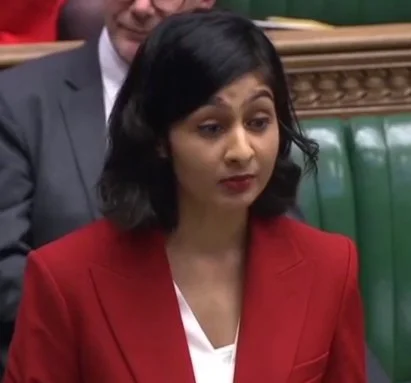Voter Apathy: 2024 UK focus
A Psychological and Socioeconomic Exploration Amidst Current UK Events
As the UK approaches its general election on July 4th, voter apathy is becoming an issue of great importance. Understanding why many citizens may abstain from voting requires delving into a mix of psychological, socioeconomic, and current events. This article explores these factors, offering a comprehensive view of the sentiments shaping voter behaviour, supported by peer-reviewed research and current events.
Psychological Disengagement and Political Alienation
Political alienation is a key psychological factor behind voter apathy. Many citizens feel disconnected from the political process, doubting that their vote will make a meaningful difference. This sentiment is often exacerbated by a lack of trust in politicians and political institutions. Research shows that political alienation correlates with feelings of powerlessness and the perception that the government is unresponsive to citizens' needs (Franklin, 2004; Hobolt, 2009).
The complexity of political issues can lead to cognitive disengagement. When political discourse is dominated by technical jargon and abstract policies, it becomes challenging for voters to relate these issues to their daily lives, reducing their motivation to engage in the electoral process (Adams, Dow, & Merrill, 2006). Furthermore, recent accusations of "gaslighting" by the government regarding the state of the economy contribute to a lack of trust and confidence in political leaders (The Guardian, 2024).
Socioeconomic Factors
Socioeconomic status significantly impacts voter turnout. Individuals facing economic instability often prioritize immediate concerns over political participation. Research indicates that lower socioeconomic status correlates with reduced voter turnout, as financial hardships make voting seem less relevant to immediate survival (Geys, 2006).
Economic concerns remain prevalent. Despite a slight easing in inflation rates, the cost of living continues to be a significant worry for many. The latest data shows that while the annual inflation rate for food and non-alcoholic beverages has decreased, prices are still high, straining household budgets (ONS, 2024). This financial strain can reduce the motivation to participate in the electoral process.
Younger voters, particularly those under 35, are also less likely to vote. This trend is partly due to delayed transitions to adulthood, such as extended education and financial dependence on parents, which result in lower civic engagement (British Election Studies, 1964-2010).
Political Factors
The electoral system itself influences voter turnout. Proportional representation systems usually have higher voter turnout compared to majoritarian systems because they provide broader political representation, making voters feel their preferences are more likely to be represented (Endersby & Krieckhaus, 2008). The competitiveness of elections also plays a role; close races tend to generate higher voter engagement as the perceived impact of each vote increases (Martínez Coma, 2015).
The political environment is highly charged with significant developments, such as leadership changes in the SNP and ongoing challenges within the Conservative and Labour parties. Local election results have revealed significant voter dissatisfaction, particularly with the Conservative party, as seen in the shock losses in traditionally strong Tory areas (The Guardian, 2024). These political upheavals can either mobilize or further alienate voters.
Institutional Issues and Public Health
Persistent industrial action, such as the ongoing train strikes by ASLEF and other unions, also contributes to voter frustration. These strikes, driven by disputes over pay and working conditions, disrupt daily life and travel plans, leading to broader dissatisfaction with the government's handling of labour issues (TimeOut, 2024).
Public health concerns, such as the ongoing monitoring of a new COVID-19 variant and an E. coli outbreak affecting over 100 people across the UK, add to public anxiety. The UK Health Security Agency is closely watching these developments, which strain public health resources and add another layer of concern for the average voter.
Media and Misinformation
Media significantly shapes voter perceptions. The proliferation of misinformation and sensationalist coverage of political issues can lead to confusion and disillusionment among voters. When the media focuses more on scandals and less on substantive policy discussions, public trust and interest in politics erode (Stockemer, 2017).
Social media, while a tool for engagement, can also contribute to political polarization and echo chambers, where individuals are only exposed to information that reinforces their pre-existing beliefs. This deepens political divides and discourages moderate voters from participating in what they perceive as a hostile and unproductive political environment (Hegre & Sambanis, 2006).
Simply Put
The decline in voter turnout is a multifaceted issue, influenced by psychological disengagement, socioeconomic barriers, institutional constraints, and current events. Addressing these challenges requires a comprehensive approach, including enhancing political education, reforming electoral systems to be more inclusive, and fostering a political culture that emphasizes the importance of every vote. Only by tackling these underlying issues can we hope to reverse the trend of voter apathy and strengthen democratic participation.
References
British Election Studies (1964-2010). Data on Voter Turnout and Demographic Trends.
Franklin, M. N. (2004). Voter Turnout and the Dynamics of Electoral Competition in Established Democracies since 1945. Cambridge University Press.
Martínez Coma, F. (2015). Turnout Determinants in Democracies. Electoral Studies, 44, 105-116.
"Accusations of Gaslighting Over the Economy." The Guardian, June 2024.
"Consumer Price Inflation." Office for National Statistics, June 2024.












